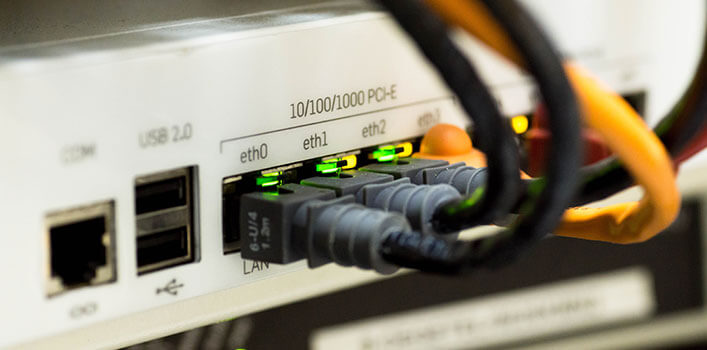Small businesses are often at a greater risk for cyber threats because they typically have smaller budgets and do not have the revenue to afford their own information technology departments to deal with these threats. In addition, 87 percent of small business owners do not believe they are at risk for an attack. As a result, they are often the ones targeted by cybercriminals. In fact, these varied attacks can be so harmful that the majority of small businesses go out of business within six months of an attack. So what can you do to stay ahead of the game and protect your small business from these threats?
5 Network Security and Compliance Best Practices to Follow
Here are five best practices you should employ to protect your network security, while also ensuring compliance.
- 1. Institute a Security Policy
- Most importantly, you want to first establish specific parameters for the use of your external drives and accounts and stringent protection for your users’ login information. Familiarizing your employees with security threats is also essential to the security of your business. You can do this by offering regular training that focuses on individual parts of your security policy, which will better prepare your employees when and if they are approached by a cybercriminal.
- 2. Utilize the Most Up-to-Date Software
- It is imperative to ensure that your antivirus software is up to date and that you have your IT personnel install updates as soon as they are available. They should also monitor the effectiveness of your antivirus software by conducting regular audits to determine what needs to be upgraded.
- 3. Keep Track of Who Has Access to Your Network
- It is necessary, obviously, to allow your staff access to your network. Be diligent in keeping track of everyone who has access, to what levels they have access and always maintain a record, off-site, of all access privileges and passwords. make sure to update this information as employees and service personnel may come and go as time goes on.
- 4. Keep Tabs on Third-Parties
- Similar to your employees and mobile devices, you should also limit third-party access to your network. A good rule of thumb is to only provide them with the minimum amount of access they need to do their job. You also want to screen all the companies you work with to ensure that they have stringent security policies and are compliant.
- 5. Establish File Integrity Monitoring
- Finally, you want to consider utilizing file integrity monitoring software to enhance your network security. It can go a long way in helping to protect your small businesses’ sensitive data, particularly with the emergence of WannaCry ransomware, which targets computers and encrypts data files.
If you are a small business, do not assume you cannot afford protection. It is much more costly to forgo protection than it is to put it in place.
CIO Tech can help you stay on top of cyber threats. Our approach is personalized to every business we service. Do not ignore the risk. Contact us today at 813-649-7765.

